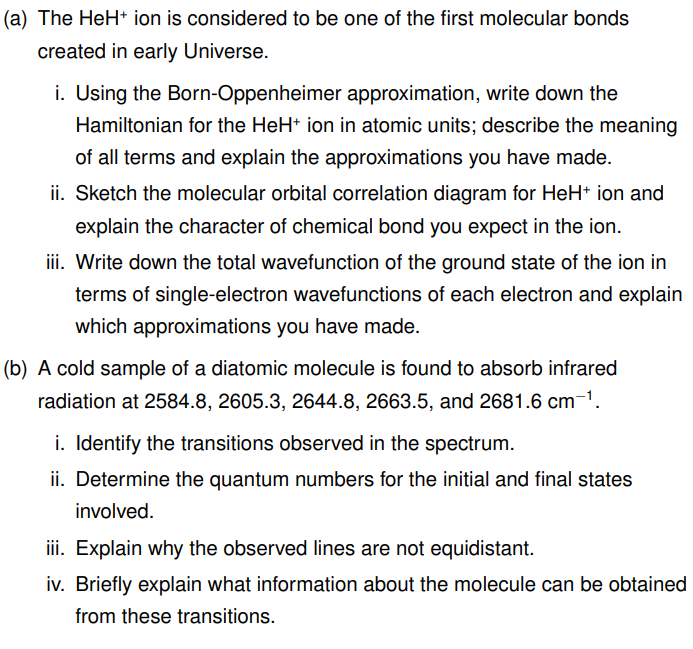Answered step by step
Verified Expert Solution
Question
1 Approved Answer
(a) The HeH* ion is considered to be one of the first molecular bonds created in early Universe. i. Using the Born-Oppenheimer approximation, write

(a) The HeH* ion is considered to be one of the first molecular bonds created in early Universe. i. Using the Born-Oppenheimer approximation, write down the Hamiltonian for the HeH* ion in atomic units; describe the meaning of all terms and explain the approximations you have made. ii. Sketch the molecular orbital correlation diagram for HeH* ion and explain the character of chemical bond you expect in the ion. iii. Write down the total wavefunction of the ground state of the ion in terms of single-electron wavefunctions of each electron and explain which approximations you have made. (b) A cold sample of a diatomic molecule is found to absorb infrared radiation at 2584.8, 2605.3, 2644.8, 2663.5, and 2681.6 cm-1. i. Identify the transitions observed in the spectrum. ii. Determine the quantum numbers for the initial and final states involved. iii. Explain why the observed lines are not equidistant. iv. Briefly explain what information about the molecule can be obtained from these transitions.
Step by Step Solution
★★★★★
3.38 Rating (154 Votes )
There are 3 Steps involved in it
Step: 1

Get Instant Access to Expert-Tailored Solutions
See step-by-step solutions with expert insights and AI powered tools for academic success
Step: 2

Step: 3

Document Format ( 2 attachments)
636c215f510af_243834.pdf
180 KBs PDF File
636c215f510af_243834.docx
120 KBs Word File
Ace Your Homework with AI
Get the answers you need in no time with our AI-driven, step-by-step assistance
Get Started


